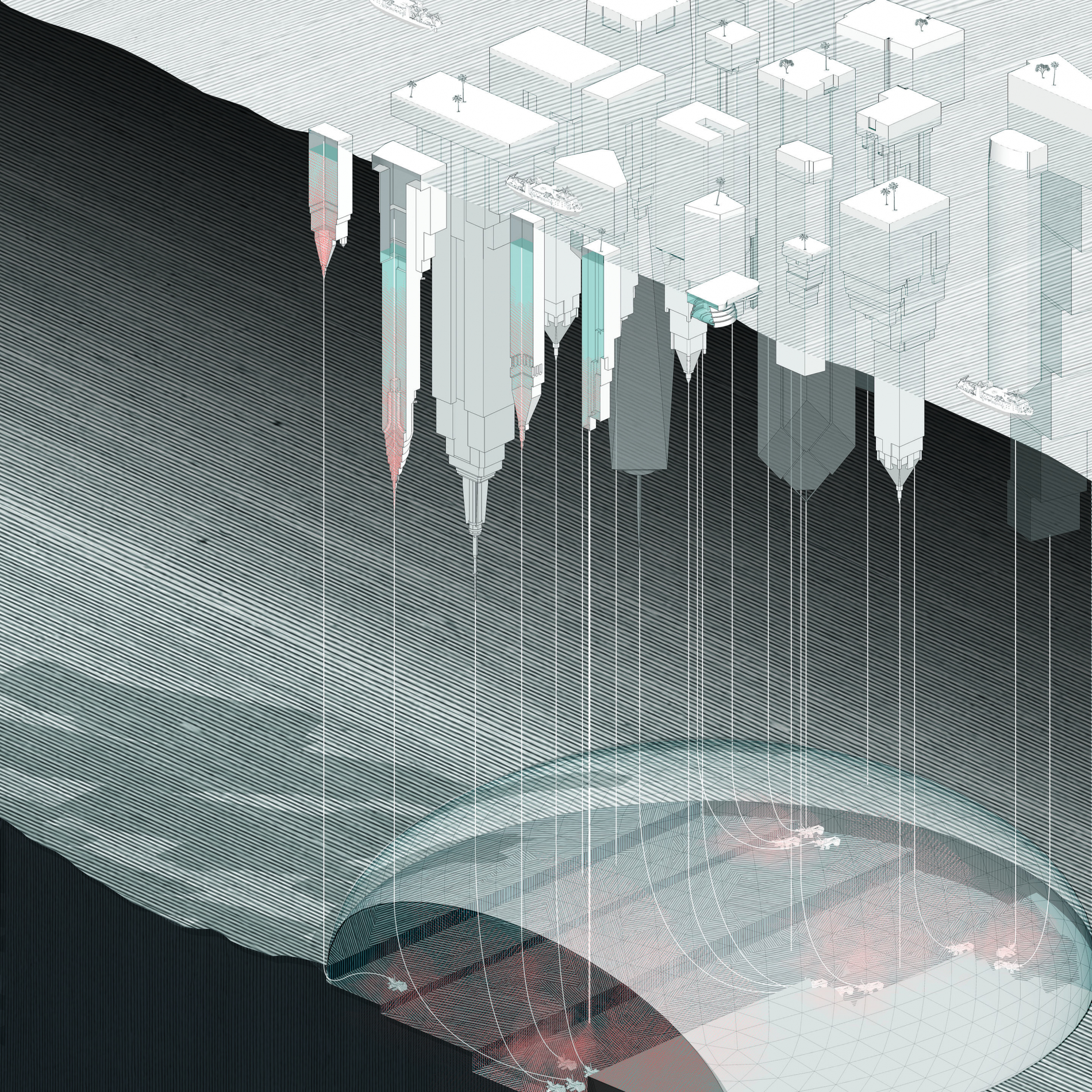In the opening chapter of Ocean Gardens, an early handbook on aquarium care, the British artist and naturalist Noel Humphreys admonished his reader: "To appreciate Nature, the mind requires a special education, without which the eye and the ear perceive but little of the miracles passing before them." He added, "the wonders of the ocean floor do not reveal themselves to vulgar eyes."
The aquarium was born out of such desire to make sense, or represent to the senses, the inaccessible, expansive, and mysterious deep sea. Today, the call to develop “vulgar eyes” is ever timely as humans, who have declared themselves "geographic leviathans," attempt to make sense of their transformation of the ocean – of gyres of marine debris, deep-sea mining plumes, and ocean acidification. The current environmental condition seems to involve a crisis of the imagination, of the dead-end worlds of prescriptive technocratic solutions or apocalyptic scenarios, the amendment of which might depend on finding other ways of imagining nature and humanity’s relation to it.
Geographic Leviathan explores such affective agency of a cabinet of natural history in a post-natural world. The drawings appropriate the aquarium worldview to take aim at the abysmal distance between our selfish economic worries and the great scales of the Earth. Each aquarium constructs a section of the Pacific Ocean through the Clarion-Clipperton Fracture Zone. Collectively, the nine aquariums weave together the externalities of resource exploitation and climate change into spatial scales, temporalities, and species beyond the human.
Geographic Leviathan
Additional Info
- Author(s): Design Earth
- Year(s): 2016
- Project team: Rania Ghosn, El Hadi Jazairy with Reid Fellenbaum, Ya Suo, Jia Weng, Shuya Xu, Saswati Das and initial contributions by Rixt Woudstra
-
Bio:
Design Earth is led by Rania Ghosn (LB/US) and El Hadi Jazairy (DZ/US). The design-research practice examines the geographies of technological systems to open aesthetic and political concerns for architecture and urbanism. Their work is widely recognized, including a Young Architects Prize from Architectural League of New York. They received the Association of Collegiate Schools of Architecture Faculty Design Awards (2017 and 2014), a Jacques Rougerie Foundation’s First Prize (2015), and honorable mentions for their competition entries in City Vision, Organic Skyscraper, Archinect Dry Futures, and The Architect's Newspaper Best of Design Awards in Architectural Representation. Design Earth has exhibited internationally at Venice Architecture Biennale, Oslo Architecture Triennale, Lisbon Architecture Triennale, Parsons School for Design, MIT Keller Gallery, and Sursock Museum in Beirut. They are authors of Geographies of Trash (ACTAR, 2015) and Two Cosmograms (MIT SAP, 2016). Some of their recent writings are published in Harvard Design Magazine, Pidgin, Volume, Journal of Architectural Education, San Rocco, MONU, Avery Review, Thresholds, Bracket, and Perspecta.
Ghosn and Jazairy hold doctor of design degrees from Harvard Graduate School of Design, where they were founding editors of the journal New Geographies and respectively editors in chief of Landscapes of Energy (2010) and Scales of the Earth (2011). Ghosn is currently Assistant Professor of architecture and urbanism at Massachusetts Institute of Technology, and Jazairy is Assistant Professor at University of Michigan Taubman College of Architecture and Urban Planning.
- Link: design-earth.org


